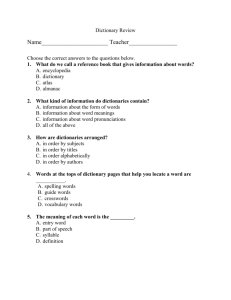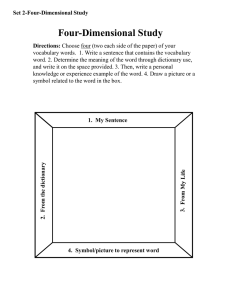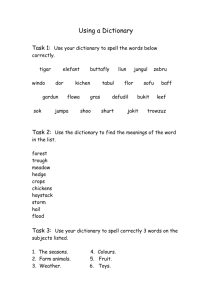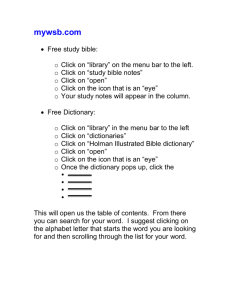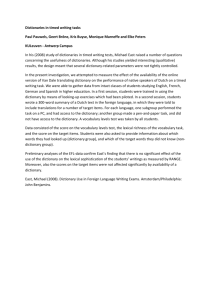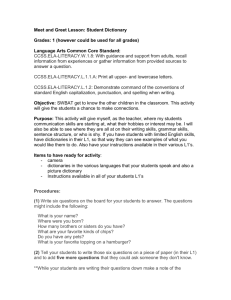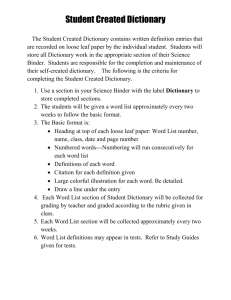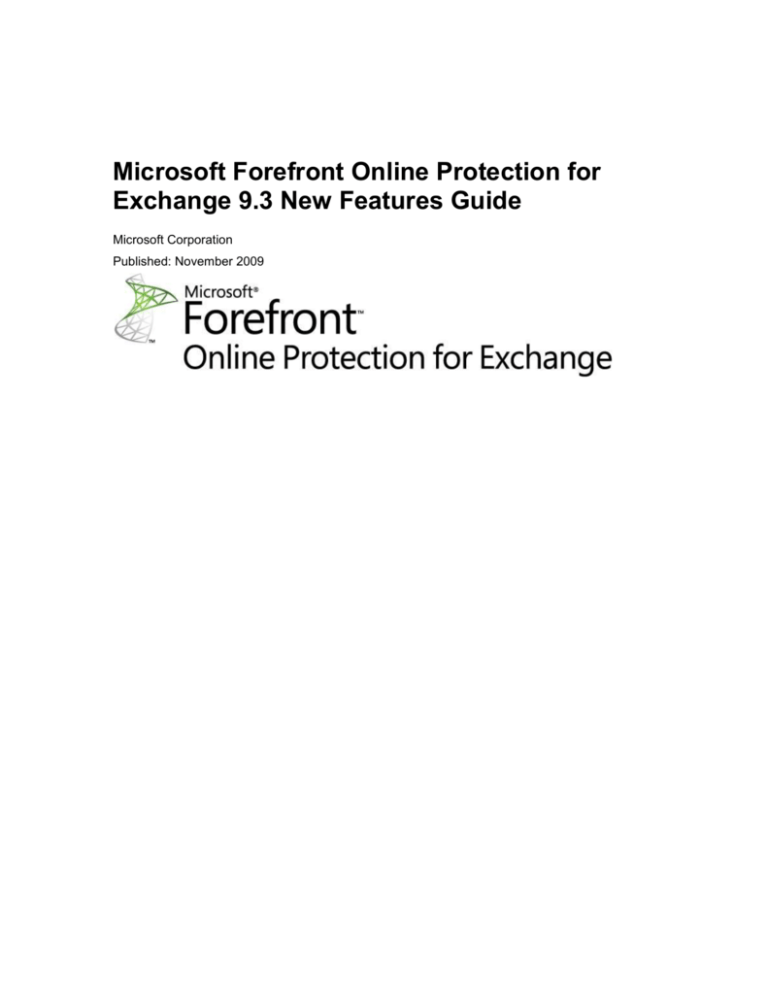
Microsoft Forefront Online Protection for
Exchange 9.3 New Features Guide
Microsoft Corporation
Published: November 2009
Legal Information
Microsoft may have patents, patent applications, trademarks, copyrights, or other intellectual
property rights covering subject matter in this document. Except as expressly provided in any
written license agreement from Microsoft, the furnishing of this document does not give you any
license to these patents, trademarks, copyrights, or other intellectual property.
©2009 Microsoft Corporation. All rights reserved.
Microsoft, Active Directory, Entourage, Excel, Hotmail, Outlook, Windows, and Windows Server
are trademarks of the Microsoft group of companies. All other trademarks are property of their
respective owners.
Contents
Introduction ...................................................................................................................................... 5
Overview .......................................................................................................................................... 5
Enhancements and changes resulting from the 9.3 release ........................................................ 5
Enhanced Policy Rule Syntax Options ............................................................................................ 6
Basic syntax .............................................................................................................................. 7
RegEx syntax ............................................................................................................................ 8
New Policy Rules E-mail Header Match Option ............................................................................ 11
Custom Policy Rules Filters ........................................................................................................... 12
Updated Match Option for Outbound Forced TLS Rules .............................................................. 14
Globalization of the Administration Center .................................................................................... 15
Support in Local Languages .......................................................................................................... 18
Minor Interface/Terminology Changes .......................................................................................... 18
Policy Rules Tab ........................................................................................................................ 18
Introduction
This guide provides up-to-date information about the latest features and changes for Microsoft
Forefront Online Protection for Exchange.These changes help improve performance and
usability, and give you better management capabilities for existing hosted services.
You can use the information in this document to help prepare your messaging environment for
updated services, and to communicate information to customers, partners, and employees.
Overview
The primary objective of the Microsoft Forefront Online Protection for Exchange 9.3
enhancements is to improve your ability to create and maintain custom filtering rules. These
enhancements were a direct result of feedback from Forefront Online Protection for Exchange
customers, who expressed a need for more options when they created custom company policy
rules for filtering, and more flexibility to manage these rules.
Enhancements and changes resulting from the 9.3
release
Policy rule syntax options: You have the option to use two types of syntax. First, you can use
a basic syntax, which is a mixture of comma-separated values (CSV) and simple stringwildcard syntax. Second, you can use a subset of the regular expression (RegEx) syntax for
more complex rules, which is useful when listing content for policy rules.
New Policy Rules e-mail header match option: You can match e-mails based on e-mail
header name and value. The following sample e-mail header rule is shown in both basic and
RegEx syntax.
Examples:
Header: Basic syntax
Name match expression:
Message-ID
Value match expression:
<d1234f1869fb3fb83bfd215319beb77c@www.contoso.com>
Interpretation:
Matching e-mail header containing the header "Message-ID:
<d1234f1869fb3fb83bfd215319beb77c@www.contoso.com>"
5
Header: RegEx syntax
Name match expression:
X-Mailer
Value match expression:
ContosoMailer\s\[version\s1\.73\]|PartnerContosoMailer1234
Interpretation:
Matching e-mail header that contains the header "X-Mailer:
ContosoMailer [version 1.73]" including whitespaces OR
"X-Mailer: PartnerContosoMailer1234"
Updated match option for outbound forced TLS rules: The Policy Rules editor now offers a
check box to enable Opportunistic TLS for recipients not specifically identified by the policy
rule.
Custom policy rules filters now feature the following enhancements:
a. The ability to upload dictionaries of custom-created lists or content for use in policy rules
b. The ability to apply the dictionaries across multiple rules and domains
Example:
You want to add 200 e-mail addresses to an existing list of 400 addresses that are being
used in multiple policy rules. By using the new dictionaries feature, you do not have to
search for and edit every policy rule that uses this list of addresses. You can just edit or
replace the dictionary of addresses and all policy rules using this dictionary will be
updated accordingly.
Other updates to the Administration Center include the following:
a. Globalization of the Administration Center: The Administration Center and online help
center are now available in 13 languages.
b. Support: Help documentation has also been translated into 13 languages and telephone
support is also available in these languages.
c.
Minor interface and terminology changes: Some terms, titles, and icons located
throughout the Administration Center have been updated as part of an ongoing effort to
improve the user experience and globalization of the Administration Center.
Enhanced Policy Rule Syntax Options
When creating policy rules, you now have two options for the syntax of the rule. First, you can
use comma-separated values (CSV) mixed with the string-wildcard syntax, which is listed as
Basic in the Administration Center Policy Rules editor and can be used for both manually entered
content in the policy rule editor or as syntax for the Dictionary file uploaded through the Filters
repository. Second, you can use a subset of characters specified in the Regular Expression
syntax, which is listed as RegEx in the Policy Rules editor, for more complex rules. If you are not
familiar with RegEx syntax, you can select the Basic option, which will allow you to create simple
6
expressions for content filtering and help you write correct match expressions by evaluating your
match expressions format based on the context they are defined within. For example, only correct
IP addresses will be accepted in the IP address field. If the rules you wish to create require more
complexity, such as matching patterns of numbers and patterns of words, you can use a subset
of RegEx syntax characters by selecting the RegEx option. With this option there are no context
based validations; only syntax-specific validations will apply.
Basic syntax
When you select Basic in the Policy Rules editor, you will be able to list expressions using a
CSV syntax separating the match expressions with commas. Additionally, you will be able to
enhance match expressions with simple string-wildcard metacharacters. The same syntax applies
to dictionary files uploaded through Filters.
Basic syntax definition:
Metacharacter
Description
Example
,
A comma is the choice
metacharacter, also known as an
alternation or a separator, and it
matches the expression listed
either before or after the comma.
abc, def, xyz matches abc or
def or xyz
*
An asterisk is the wildcard
metacharacter and it represents
zero or more characters.
ab* matches aba or abaa or
abaaa or ab12345667, etc.
Note
This character is
equivalent to the (.*) in
the RegEx syntax.
?
The question mark represents
any single character.
ab? matches aba or abb or
abc or ab1 or ab2, etc.
Note
This character is
equivalent to the . in the
RegEx syntax.
\
A backslash is the escape
\*a\\bc\? matches *a\bc?
operator. In order to match the
literals , * ? or \ and to suppress
their special meaning in the basic
syntax, the escape operator
needs to be placed in front of the
7
Metacharacter
Description
Example
basic syntax operators.
Note
This character is
equivalent to the \ in the
RegEx syntax.
/0 up to /23
A slash mark indicates Classless 99.99.99.0/23 matches IP
Inter-Domain Routing (CIDR)
ranges from 99.99.99.0 up to
notation. This can be expressed
99.99.99.255
by adding a slash mark / followed
by a number from 0 up to 23
after the last octet of an IP
address.
Note
CIDR notation applies
only to IP address
expressions and cannot
be used in other context.
Note
The total number of characters inserted into any Policy Rule field or dictionary cannot
exceed 9,000. Dictionary file size limit is 2 MB.
RegEx syntax
When you select RegEx in the Policy Rules editor, you can specify more complex expressions
that match patterns of text, numbers, or special characters. For example, you can match many
different variations of a word such as viagra, vi@gra, vlagra, using a subset of RegEx characters.
This will allow you to minimize the number of rules needed, and to create powerful matching
expressions, such as scanning for credit card numbers, social security numbers, e-mail
addresses, and similar strings of sensitive words or numbers.
The RegEx option in the Policy Rules editor is a subset of the POSIX Basic and Extended
Regular Expressions syntax, expressed in the following table.
Character type
Character
Description
Example
Meta
^
The caret metacharacter
matches the starting
position within the string.
^abc matches
abc1234, but will not
match 1234abc
Note
8
Character type
Character
Description
Example
Used in
combination with
the dollar sign
character, the caret
has the same
functionality as the
exact match option.
Meta
$
The dollar sign
metacharacter matches the
ending position of the
string, or the position just
before a string-ending
newline.
abc$ matches
1234abc, but will not
match abc1234
Note
In combination with
the caret character,
the dollar sign
offers the same
functionality as the
exact match option.
Meta
*
The star matches the
preceding element zero or
more times.
ab*x matches abx or
abbx or abbbx or
abbbbx, etc.
Important
This character
should be used
with caution; match
expressions using
this character might
match more than
intended.
Meta
+
The plus metacharacter
matches the preceding
element one or more times.
ab+x matches abbx or
abbbx or abbbbx or
abbbbbx, etc.
Important
This character
should be used
with caution; match
9
Character type
Character
Description
Example
expressions using
this character might
match more than
intended.
Meta
.
The period metacharacter
matches any single
character except newline.
ab.x matches ab1x or
ab2x or ab3x or ab4x,
etc.
Meta
?
The question mark matches ab? matches a or ab
the preceding element zero
or one times.
Meta
|
The pipe is a choice, or
alternation, character,
which matches the
expression either before or
after the operator, starting
from the first (left) string
and stopping when a match
is found.
abc|def|xyz matches
abc or def or xyz or
abc12345, but will not
match a123c or axm
Meta
\
The backslash causes
RegEx metacharacters to
be treated as literal
characters in the context of
the rule.
x\*1\.5\+9\\x=y
matches x*1.5+9\x=y
Class
\w
The backslash with
lowercase w matches any
word character, including
alphanumeric characters
with "_").
\w123 matches a123
or bbb123 or
c_c123xxx, but will not
match @123
Class
\d
The backslash with
lowercase d matches any
decimal digit.
\dabc matches
123abc or
12345abcxxx or
1abc1, but will not
match abc123 or
@abc123
Class
\s
The backslash with
lowercase s matches any
white-space character.
abc\sdef matches abc
def
10
Important
If you are unfamiliar with RegEx syntax, we recommend that you use the Basic option or
test rules by using the Test policy rule action before using them with policy rule actions
such as Reject, Encrypt, Redirect. The Administration Center Policy Rules support
only a subset of RegEx characters.
The total number of RegEx characters inserted into any Policy Rule field cannot exceed 9,000.
For more information about both syntax options, see the Policy Rule Syntax section in the
Administration Center User Guide.
New Policy Rules E-mail Header Match
Option
The Policy Rules editor now offers e-mail message header fields as a match option for policy
rules. You can create rules for scanning the header field name and field value using Basic or
RegEx syntax. The following is an overview of the e-mail header match options. For more
information, see the Policy Rule Match Options section of the Administration Center User
Guide.
E-mail part
Match for
Syntax
Additional match option
Header
Field name
Basic
none
Field value
Basic or RegEx
Case sensitive match
The following image shows the new header policy editor options.
11
Custom Policy Rules Filters
The Filters repository lets you add and manage large lists of values for multiple policy rules. This
includes the following:
Upload large lists. Called Dictionaries, these lists can contain IP addresses, domains, e-mail
addresses, keywords, and file names and extensions that you want to quickly use in various
policy rules. Utilizing these lists can be faster than manually entering hundreds of keywords
or e-mail addresses in the policy rule editor.
Download dictionaries. Dictionaries can be downloaded from within the Filters tab by
clicking the dictionary name.
Replace dictionaries. Any dictionary can be replaced, even if it is currently associated with a
policy rule. In this case, all policy rules using the dictionary that is replaced will be updated
with the new values.
Delete dictionaries. Dictionaries can be used in multiple policy rules. Therefore, deleting
them from the Filters repository would cause a change of behavior in the associated policy
rules and a potentially undesirable impact on the message flow. Therefore, dictionaries that
are currently associated with any policy rule cannot be deleted from the Filters repository
(see the Usage column on the Filters tab). To safely delete dictionaries, browse all policy
rules using the dictionaries by navigating to the specific policy rules via the link on the Usage
column, and unlink the dictionaries from the appropriate policy rules. Only then can the
dictionaries be deleted from the Filters tab.
Audit dictionary actions. Any time a dictionary is added, deleted, or moved, a record of the
action will be saved in the Audit Trail. This will ensure that any outcomes associated with
adding, deleting, or moving a dictionary can be tracked to the root cause.
Note
The maximum permissible file size for dictionaries is 2 MB and each file can support
9,000 characters. Additionally, dictionary files support only Basic syntax. For more
information about the supported syntax, see Basic Syntax in Policy Rule Syntax.
How to import a dictionary
1. From the Administration tab, select the Filters subtab
2. In the Tasks pane, select Import Dictionary
3. In the Import Dictionary box, select Browse next to Dictionary file:
4. Find and select the file (e.g. CSV or TXT file format) in your network or computer files
and then select Open
5. If desired, change the name of the dictionary file in the Dictionary name: field
(otherwise, whatever name you gave the file when you saved it to your own files will be
used in this dialog box and once the dictionary has been uploaded).
6. Select the appropriate type of content that your dictionary contains (e.g. domain names,
12
e-mail addresses) from the Dictionary contents menu.
7. If desired, add any comments/notes about the dictionary in the Comments field.
8. Select Import.
How to replace a dictionary
1. From the Administration tab, select the Filters subtab
2. In the Tasks pane, select Import Dictionary
3. In the Import Dictionary box, select Browse next to Dictionary file:
4. Find and select the file (e.g. CSV or TXT file format) in your network or computer files
and then select Open
5. Change the name of the dictionary file in the Dictionary name: field to match the file
name of the dictionary you want to replace.
6. Select the check box Replace Dictionary if exists.
7. Select the appropriate type of content that your dictionary contains (e.g. domain names,
e-mail addresses) from the Dictionary contents menu. This content type needs to match
the content of the dictionary you want to replace.
8. If desired, add any comments/notes about the dictionary in the Comments field.
9. Select Import.
How to add a dictionary to a rule
1. Select the Policy Rules subtab.
2. Select the rule you want to apply the dictionary to by clicking the appropriate rule ID, or
create a new rule.
3. Expand the policy editor fields for the appropriate message component (e.g. Body) by
selecting the down-arrow icon next to the component title.
4. Select your uploaded dictionary from the Dictionary combo box.
Note
You can either have a match expression in the textbox, or select Dictionary.
If you select Dictionary, the textbox will be de-activated, and any match
expressions entered in this textbox will be deleted upon saving of the policy
rule.
5. Add additional settings to the policy rule and select Save.
How to delete a dictionary
1. Select the Filters subtab.
2. Select the dictionary you want to delete by clicking the checkbox next to the name of the
appropriate dictionary.
13
Important
If the dictionary you wish to delete is currently in use by any policy rules,
browse all policy rules associated with this dictionary (by navigating to the
specific policy rule by selecting Usage within the Filters tab) and unlink the
dictionary from these policy rules. Then you can return to the Filters tab and
delete the dictionary.
3. Select the appropriate dictionary and click Delete.
How to audit a dictionary-related action
1. Select the Tools tab.
2. Select the Audit Trail subtab.
3. Browse the Audit Trail for the PatternFiles events. Information related to the creation,
replacement, and deletion of dictionaries is recorded here.
For more information about dictionaries, see the Filters section of the Administration Center User
Guide.
Updated Match Option for Outbound Forced
TLS Rules
The Policy Rules editor now offers a check box to allow opportunistic transport layer security
(TLS) for messages sent to recipients not specifically identified by the policy rule. If the Enable
Opportunistic TLS for unspecified recipients check box is unchecked, then outbound
messages will be bifurcated. This means that authenticated Transport Layer Security (TLS) will
be enforced for the delivery of all recipients on the message, where any of the recipients match
the Policy Filter rule and the recipient mail transfer agent (MTA) is configured to accept TLSbased connections (including valid public certificates). If one of the recipients has an MTA that
does not support TLS connections, then the message to this recipient will be rejected. Checking
this box will still enforce authenticated TLS on the recipient who matches the rule, but also allows
all other recipients to be transmitted using Opportunistic TLS if all attempts to enforce TLS fail.
The Microsoft Forefront Online Protection for Exchange service will always use the highest level
of encryption available for transmission of the messages, and, if not available, step down.
Examples:
14
Policy Rule
Apply
Message Containing Recipients
Rule Behavior
Opportunistic
TLS for
Note
unspecified
Example domain
recipients
acquisition.com supports
TLS connections, and
alpha.com does not.
Traffic Scope:
Outbound
Domain Scope:
contoso.com
Action: Force
TLS
Sender domain:
acquisition.com
Not selected
c@acquisition.com; d@alpha.com
Message to
c@acquisition.com
will be transmitted via
TLS; message to
d@alpha.com will be
rejected, since
alpha.com does not
support TLS
connections (or does
not have a valid
public certificate)
Traffic Scope:
Outbound
Domain Scope:
contoso.com
Action: Force
TLS
Recipient
domain:
acquisition.com
Selected
c@acquisition.com;d@alpha.com
Message to
c@acquisition.com
will be transmitted via
TLS; message to
d@alpha.com will be
transmitted via SMTP
(unencrypted
channel)
Globalization of the Administration Center
To support the growing set of international customers, the Administration Center site is now
available in the following languages:
Simplified Chinese
Traditional Chinese
Dutch
French
French Canadian
German
Italian
15
Japanese
Korean
Portuguese
Portuguese (Brazil)
Spanish
Supported browsers for these languages are limited to the following:
Internet Explorer 7
Internet Explorer 8
Firefox Version 3
Safari Version 3
In order to view the Administration Center in one of the 13 supported languages, your Internet
browser’s language preferences must be configured to accept the appropriate language(s).
To set language preferences for Internet Explorer 7, do the following:
1. Using Internet Explorer 7, open a browser
2. On the Tools menu, click Internet Options
3. Click the General tab
4. Select Languages
5. Select Language Preference
6. Add the language you would like to see when using the Administration Center
To set language preferences for Internet Explorer 8, do the following:
1. Using Internet Explorer 8, open a browser
2. On the Tools menu, click Internet Options
3. On the General tab, click Languages
4. In the Language Preference box, click Add
5. Add the language you would like to see when using the Administration Center
To set language preferences for Firefox 3, do the following:
1. Using Firefox 3, open a browser
2. On the Tools menu, click Options
3. Click the Content tab
4. Select Languages
5. Click the Choose button
6. Choose the language you would like to see when using the Administration Center
16
To set language preferences for Safari 3 (using the Mac OS X system preferences) do
the following:
1. Using Safari 3, open a browser
2. Select System preferences
3. Select International
4. Select Language
5. Select the language you would like to see when using the Administration Center
The following areas of the Administration Center will not be localized for the 9.3 release:
Reports:
The output of scheduled reports; that is, the Reports pages will be localized, but the
generated reports from these pages will not.
The output of ad-hoc View reports.
The e-mail message that accompanies scheduled reports.
Administration Center Upload Notifications: Only the network server option will be localized,
as the Directory Synchronization Tool is out of scope for this release.
Policy Rules: The details sections of the policy and dictionary list views will have a
combination of English and a local language. When content is entered into the following
Policy Rules fields, it may not be translated into the local language:
Rule ID input
Domain scope input
Usage input
Copy admin e-mail address
Sender IP address
Sender domains
Sender e-mail address
All header information
Recipient domains
Recipient e-mail address
Attachment file extensions
Message subject
Message body
Maximum number of recipients
Maximum size
Character sets
17
Audit Trail: Any content entered in the user e-mail address and domain fields in the Audit
Trail will not be translated. The Activity field will be a combination of English and local
language.
SMTP Connectivity Checker: Some areas within the SMTP Connectivity Checker pages will
not be translated into local language. These include:
IP address
E-mail address
Customer Name
Miscellaneous company information: A variety of company information fields, located
throughout the Administration Center, will also not be translated into local languages. These
include, but are not limited to: company, domains, IP addresses, subscription types, e-mail
addresses, and footers.
Support in Local Languages
Support and help documentation is also now available in Chinese, Dutch, French, German,
Italian, Japanese, Korean, Portuguese, and Spanish. Local language telephone support is also
available for these languages. To receive telephone support in one of these languages, follow the
instructions for using translation services when you call Microsoft technical support at (866) 2917726.
Minor Interface/Terminology Changes
As part of an ongoing effort to improve the usability of the Administration Center, Microsoft made
changes to the appearance of some features and also changes to some terminology. These
changes are summarized here.
Policy Rules Tab
The Direction category has been renamed to Traffic Scope, in order to better indicate that this
category represents whether the policy rule is for inbound, outbound, or disabled message traffic.
The Scope category has been renamed to Domain Scope in order to specify that this category
reflects the domains associated with the policy rule.
A variety of other minor terminology changes have also been made to the Policy Rules editor field
titles in order to provide a more user-friendly experience.
The following image shows the updated Policy Rules tab:
18
19

